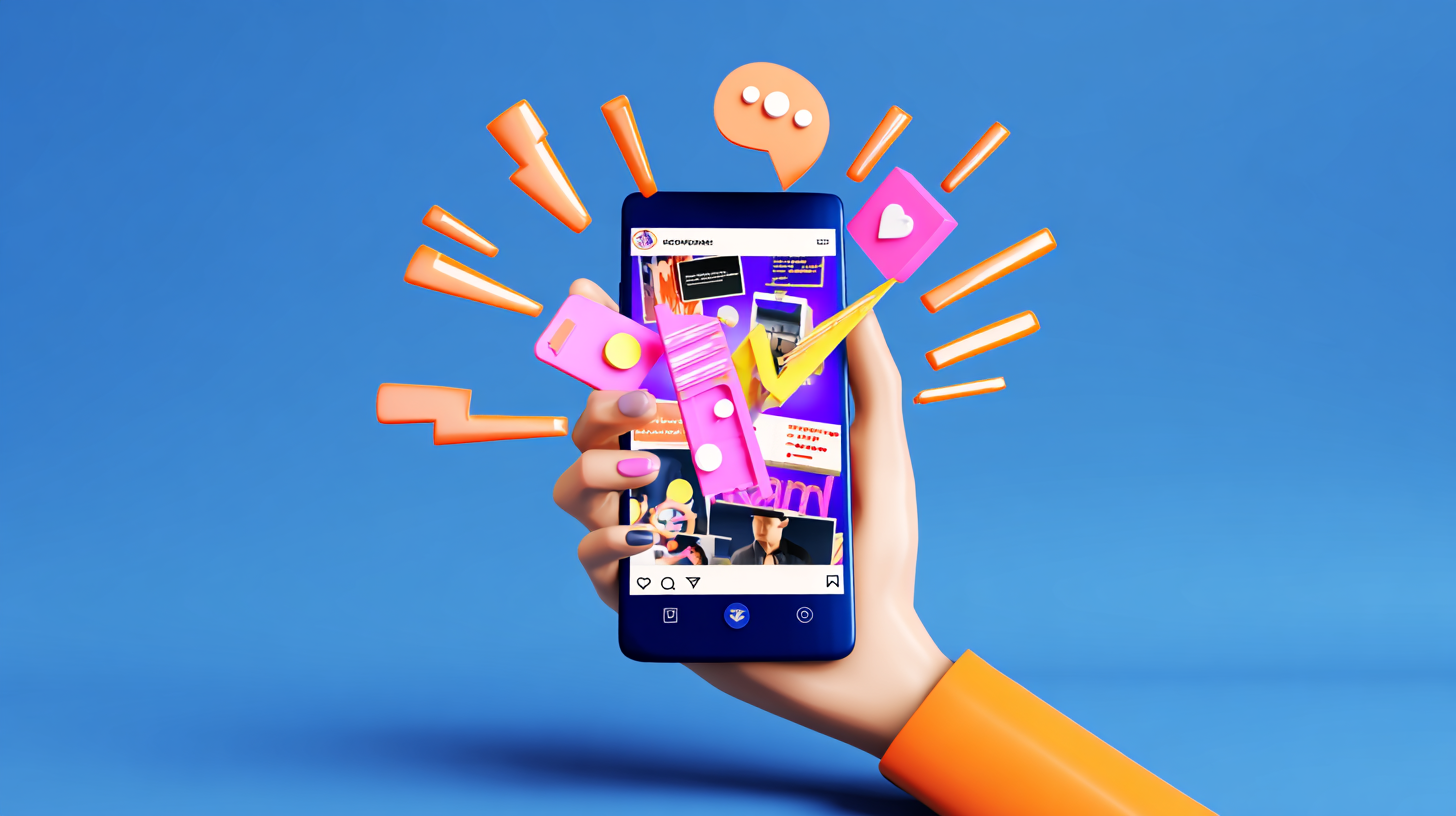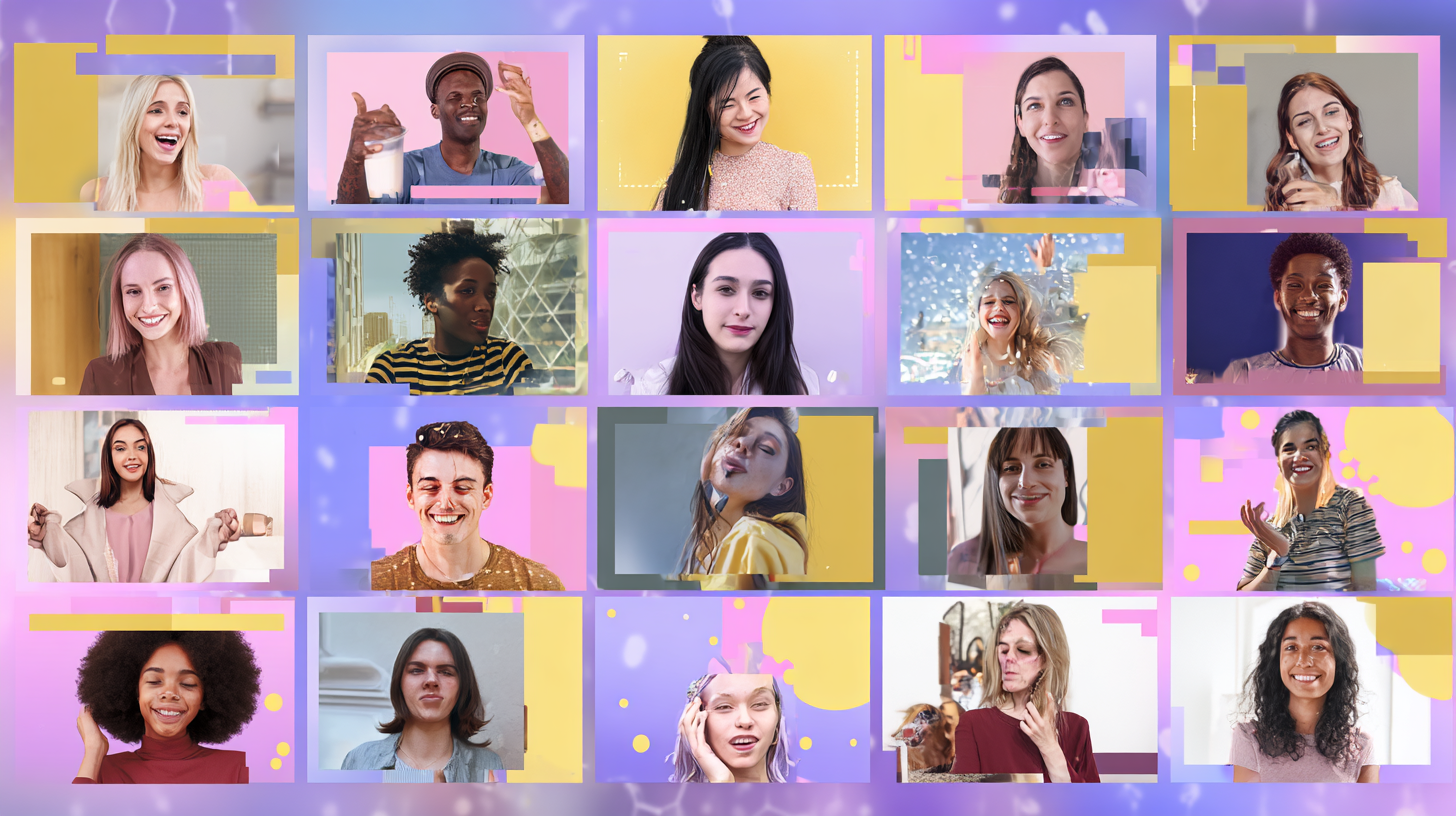12 Video Marketing Trends To Incorporate Into Your Marketing Strategies (updated 2025)



Video is no longer an optional component of a marketing strategy; it's the central engine driving engagement, conversion, and brand loyalty. As consumer behaviors and platforms evolve, the methods for creating impactful video content are shifting significantly. Staying ahead of these changes isn't just about adopting the latest fad; it's about understanding the fundamental updates in how audiences connect with brands. Success now demands more than high production value; it requires authenticity, interactivity, and a deep understanding of platform-specific formats.
This comprehensive guide details the 25 video marketing trends to incorporate into your marketing strategies to not only compete but to lead in your industry. We will move beyond surface-level observations to explore each trend in depth, from the continued dominance of short-form vertical video and the rise of live stream commerce to the scalable power of AI-powered video creation and user-generated content. For each trend, you'll find actionable insights, real-world examples, and practical steps to ensure your brand's video content is not just seen, but remembered and acted upon.
Effectively integrating these trends requires a solid foundation. Beyond video-specific tactics, a holistic approach requires understanding essential social media management tips for 2025 to elevate your overall strategy and ensure your content reaches the right audience at the right time. This list is designed for marketing directors, creative teams, and founders who need scalable, reliable, and forward-thinking creative solutions. Let's dive into the trends that will define video marketing and prepare your strategies for the future.
1. Short-Form Vertical Videos

The dominance of short-form vertical video is undeniable. This trend involves creating content optimized for mobile viewing in a 9:16 aspect ratio, typically lasting between 15 and 90 seconds. Platforms like TikTok, Instagram Reels, and YouTube Shorts have conditioned users to expect quick, engaging, and vertically-oriented videos, making this format a cornerstone of modern video marketing strategies. Its power lies in its ability to capture attention instantly in a scroll-heavy, mobile-first environment.
Brands like Duolingo have mastered this with their humorous mascot-driven TikToks, while Chipotle’s user-generated content challenges, like the #GuacDance, have gone viral. The key is to create content that feels native to the platform, blending entertainment with brand messaging seamlessly. This approach is highly effective for building brand personality, increasing organic reach, and engaging with a younger demographic.
How to Implement Short-Form Vertical Video
- Hook Immediately: You have less than three seconds to stop the scroll. Start with a compelling visual, a provocative question, or a surprising statement.
- Leverage Trends: Incorporate trending audio, effects, and hashtags to boost visibility. Platform algorithms often favor content that uses popular sounds and formats.
- Optimize for Sound-Off & Sound-On: While many users watch with sound on, always include clear, large on-screen text or captions to convey your message without audio.
- Film Natively: Avoid simply cropping a horizontal video. Film in a 9:16 aspect ratio to ensure all critical elements are framed correctly and the viewing experience is optimal.
- Be Consistent: Post regularly to stay relevant and signal to algorithms that you are an active creator, which can increase your content's reach.
For an even deeper dive into this format, explore these insights on crafting compelling short-form video reels.
2. Live Streaming Commerce

Live streaming commerce, or "live shopping," transforms e-commerce into an interactive, real-time event. This trend merges the engagement of a live broadcast with the convenience of online shopping, allowing hosts to demonstrate products, answer viewer questions, and drive immediate sales through integrated purchasing features. It effectively digitizes the in-person shopping experience, combining entertainment and direct response in a powerful, singular format.
Pioneered by platforms like QVC and HSN and supercharged in markets like China, this model is now a staple on Amazon Live, TikTok Shop, and Instagram. For example, beauty brands like Sephora use live sessions for virtual consultations and product launches, creating urgency and providing direct value to viewers. The format fosters trust and community by enabling authentic, unedited interaction between the brand and its audience, making it a key part of modern video marketing trends.
How to Implement Live Streaming Commerce
- Promote Extensively in Advance: Build anticipation for your live event. Announce it across all channels-email, social media, and your website-highlighting the date, time, and what viewers can expect.
- Offer Exclusive Live-Only Incentives: Motivate viewers to watch and purchase during the stream by offering special discounts, limited-edition bundles, or free gifts that are not available anywhere else.
- Prepare an Engaging Narrative: Don’t just list product features. Craft compelling stories around your products, demonstrate them in creative ways, and plan a clear beginning, middle, and end for your broadcast.
- Interact with Comments in Real-Time: Acknowledge viewers by name, answer their questions as they come in, and respond to their feedback. This two-way communication is crucial for building rapport and driving conversions.
- Test Your Technology: Conduct a full technical run-through before going live. Check your internet connection, audio quality, lighting, and shopping links to prevent any disruptive glitches during the broadcast.
3. Personalized Video Content

Personalized video content moves beyond generic messaging to deliver experiences tailored to the individual viewer. This is achieved by dynamically inserting customer-specific data, such as their name, location, company, or purchase history, directly into the video. This hyper-relevant approach makes the viewer feel seen and valued, dramatically increasing engagement, building stronger customer relationships, and boosting conversion rates. It transforms a one-to-many broadcast into a powerful one-to-one conversation.
Iconic examples include Spotify's annual "Wrapped" campaign, which presents users with a personalized video recap of their listening habits, and Cadbury's campaigns that allow customers to feature their name on a digital chocolate bar. These initiatives demonstrate how personalization at scale can create highly shareable and emotionally resonant moments. The core principle is leveraging data to create unique content that speaks directly to an individual's experiences with your brand.
How to Implement Personalized Video Content
- Start Simple: Begin with basic personalization like adding a recipient's first name or company name to a video intro or outro. This is a low-barrier entry point to test the impact.
- Leverage Your CRM Data: Use platforms like Vidyard or HubSpot that integrate with your CRM to pull customer data for personalized sales outreach, onboarding videos, or renewal reminders.
- Create Scalable Templates: Design a core video template with designated "merge fields" where personalized elements can be automatically inserted. This allows for mass personalization without filming individual videos.
- Ensure Data Accuracy: Double-check your data sources for errors before launching a campaign. A video with a misspelled name or incorrect information can do more harm than good.
- Use Data Responsibly: Be transparent about how you use customer data and ensure your personalization efforts are helpful, not intrusive. Focus on adding value to the customer's experience.
For more on creating personalized video at scale, check out the tools offered by platforms like Vidyard.
4. User-Generated Content (UGC) Integration

User-generated content (UGC) integration involves strategically incorporating videos created by your customers into official marketing campaigns. This trend leverages genuine customer experiences, testimonials, and creative content to build unparalleled trust and foster a strong sense of community. By shifting the spotlight from the brand to the consumer, UGC serves as powerful social proof, showcasing authentic product use and satisfaction in a way polished ads cannot replicate.
Iconic examples include GoPro's entire marketing model, which is built on thrilling customer-shot adventure videos, and Apple's renowned 'Shot on iPhone' campaigns. Similarly, Starbucks' annual #RedCupContest encourages customers to share creative photos and videos, turning a simple product into a viral event. This approach transforms customers into brand advocates, generating a vast library of authentic, relatable, and cost-effective marketing assets that resonate deeply with potential buyers. This trend is a vital part of the top 25 video marketing trends to incorporate into your marketing strategies because it builds credibility and community simultaneously.
How to Implement UGC Integration
- Create Clear Campaign Guidelines: Launch a campaign with a specific theme and a dedicated hashtag. Clearly communicate what you want users to create and how they should submit their videos.
- Offer Meaningful Incentives: Encourage participation by offering rewards like prizes, discounts, or the chance to be featured on your brand’s official channels.
- Secure Permissions and Credit Creators: Always obtain explicit permission to use a creator's content and give them proper credit. This builds goodwill and encourages future participation.
- Showcase UGC Prominently: Don’t just relegate UGC to a single social media story. Feature the best videos on your website, in email newsletters, on product pages, and even in paid ad campaigns.
- Engage Actively: Like, comment on, and share submissions as they come in. This active engagement shows your community that you are listening and value their contributions.
Discover more ways to leverage your audience with these effective content marketing ideas.
5. Interactive Video Experiences

This trend moves beyond passive viewing by inviting the audience to become active participants in the video content. Interactive videos feature clickable elements, quizzes, polls, and choice-driven narratives that empower viewers to control their experience. By transforming content from a monologue into a dialogue, this format boosts engagement, increases information retention, and provides valuable user data. It’s a powerful tool for turning a standard video into a memorable and personalized journey.
Netflix’s Black Mirror: Bandersnatch brought choice-based narratives to the mainstream, while brands like BMW have created interactive test drive videos that let users explore car features on their own terms. Similarly, Maybelline's virtual try-on experiences allow customers to engage directly with products. This approach is highly effective for educational content, product demonstrations, and lead generation, as it keeps viewers invested for longer and guides them down a conversion funnel.
How to Implement Interactive Video Experiences
- Start with a Clear Goal: Define what you want to achieve with the interaction. Is it lead capture, education, or product exploration? This will guide the design of your interactive elements.
- Focus on User Experience (UX): Ensure interactions are intuitive and seamless. Complicated or confusing controls will lead to frustration and abandonment. Provide clear visual cues, like highlighted buttons or on-screen prompts.
- Provide Real Value: The interactivity should serve a purpose for the viewer. Whether it’s personalizing the content, unlocking exclusive information, or simply making the experience more fun, the interaction must be rewarding.
- Analyze Interaction Data: Use the data collected from clicks, choices, and quiz answers to gain insights into audience preferences and behavior. This information is invaluable for refining future marketing strategies.
- Test Across Devices: Interactive elements can behave differently on desktops, tablets, and mobile phones. Thoroughly test your video across all relevant devices to ensure a consistent and functional experience for every user.
For a deeper understanding, explore these strategies for creating effective interactive video experiences.
6. AI-Powered Video Creation

The rise of artificial intelligence is revolutionizing video production, making it faster, more affordable, and accessible to everyone. AI-powered video creation uses algorithms to automate tasks ranging from scriptwriting and voice-over generation to editing and scene creation from text prompts. This trend is a game-changer for marketing teams, enabling them to produce high-quality video content at scale without the traditional barriers of high costs and extensive technical expertise. It democratizes the creation process, empowering brands to maintain a consistent video output.
Platforms like Synthesia allow businesses to create professional training videos with AI avatars, eliminating the need for actors or studios. Meanwhile, tools like Lumen5 and Pictory can automatically transform blog posts or text into engaging social media videos in minutes. The key is using AI as a powerful assistant that handles the heavy lifting, freeing up human creativity for strategy and refinement. This approach is ideal for producing explainer videos, social media ads, and internal communications efficiently.
How to Implement AI-Powered Video Creation
- Start with Templates: Begin with template-based AI tools to get comfortable. These platforms guide you through the process, making it easy to create polished videos by simply inputting your text and brand assets.
- Maintain Human Oversight: Always review and refine AI-generated content. Check for factual accuracy, brand tone, and overall quality to ensure the final product meets your standards. AI is a tool, not a complete replacement for human judgment.
- Customize for Brand Consistency: Use AI features to upload your brand’s fonts, colors, and logos. This ensures that even automated videos feel cohesive and aligned with your established brand identity.
- Combine AI Efficiency with Human Creativity: Leverage AI for initial drafts, rough cuts, or repetitive editing tasks. This allows your creative team to focus on higher-level concepts, storytelling, and adding unique, human touches that make content stand out. To further explore how artificial intelligence can streamline your content production beyond just video, consider reviewing a practical guide to using AI for content creation.
For a deeper look at the tools available, explore this guide to the best AI video editors on moonb.io.
7. Behind-the-Scenes Content

Pulling back the curtain to reveal the inner workings of your brand is a powerful way to build trust and foster a deeper connection with your audience. Behind-the-scenes (BTS) content involves creating unpolished, authentic videos showcasing company culture, production processes, team members, and the human side of your business. This trend taps into a consumer desire for transparency and authenticity, moving beyond slick, curated advertisements to show the real people and passion powering the brand.
This approach is highly effective for humanizing your company and making it more relatable. Brands like Patagonia excel at this by showing their environmental activism in action, while companies such as Warby Parker often share videos of their design process. These glimpses into daily operations and company values build a strong, loyal community that feels emotionally invested in the brand's journey, making it a crucial component of modern video marketing trends.
How to Implement Behind-the-Scenes Content
- Embrace Authenticity: Avoid overly scripted or polished videos. The goal is to be genuine, so let natural conversations, minor mistakes, and real moments shine through. Authenticity is your most valuable asset here.
- Showcase Your Team: Feature different employees from various departments. This not only highlights your diverse talent but also puts a human face to your brand, making it more approachable.
- Document Processes: Take viewers on a journey, whether it's how a product is made, how a campaign is developed, or a day in the life of a team member. This transparency demystifies your business and adds value.
- Highlight Both Successes and Challenges: Sharing the hurdles you overcome is just as important as celebrating the wins. This vulnerability makes your brand more relatable and trustworthy.
- Encourage Employee Participation: Create an environment where employees feel comfortable and excited to be on camera. Empowering them to capture and share their own authentic moments can lead to a steady stream of genuine content.
8. Augmented Reality (AR) Video Marketing

Augmented Reality (AR) video marketing moves beyond passive viewing by layering digital information and interactive elements onto the real world through a device's camera. This trend transforms a standard video feed into an immersive and participatory experience, allowing customers to visualize products in their own space, try on items virtually, or engage with branded games. It bridges the gap between the digital and physical realms, creating highly memorable and personalized brand interactions that drive consideration and conversion.
Brands like IKEA have set the standard with their Place app, which lets users see how furniture would look in their homes. Similarly, Sephora’s Virtual Artist and Nike's AR shoe try-on experiences provide practical utility, reducing purchase uncertainty. This approach is powerful because it offers a tangible "try-before-you-buy" experience, enhances customer engagement, and generates shareable, user-generated content through branded filters and effects on platforms like Snapchat and Instagram.
How to Implement Augmented Reality (AR) Video Marketing
- Focus on Practical Utility: Create AR experiences that solve a real customer problem, such as visualizing a product's size or trying on makeup. Utility drives adoption and repeated use.
- Ensure an Intuitive Interface: The user experience must be seamless and easy to navigate. Complicated controls or slow loading times will cause users to abandon the experience.
- Provide Clear Instructions: Guide users on how to start and interact with the AR feature. Use simple on-screen text or short video tutorials to explain the process.
- Integrate Social Sharing: Encourage users to capture and share their AR experiences by including easy-to-find sharing buttons for social media platforms. This turns users into brand advocates.
- Test Across Multiple Devices: AR performance can vary significantly between devices. Thoroughly test your AR application on a wide range of popular iOS and Android models to ensure a consistent and functional experience for all users.
9. Silent Video Content

Designing videos for sound-off consumption is no longer an afterthought; it’s a strategic necessity. Silent video content is created to be fully understandable without audio, relying on strong visual storytelling, prominent captions, and text overlays. Given that many platforms, like Facebook and Instagram, auto-play videos on mute in user feeds, this format is critical for capturing attention and conveying a message instantly before a user decides to tap for sound or simply keep scrolling.
This trend was popularized by publishers like BuzzFeed's Tasty, whose overhead cooking videos are perfectly clear without a single word of narration. Similarly, Vox Media uses bold text animations and graphics in its explanatory videos to break down complex topics visually. This approach ensures your core message is delivered regardless of the viewer's environment, whether they are in a quiet office or a noisy public space. It’s a powerful way to maximize accessibility and message retention in a mobile-first world.
How to Implement Silent Video Content
- Prioritize Visual Storytelling: Your visuals must carry the entire narrative. Use clear, compelling shots, dynamic action, and expressive body language to tell the story without sound.
- Use Large, Legible Captions: Don't rely on auto-generated captions alone. Design large, easy-to-read text overlays that are baked into the video. Ensure the font and color contrast well with the background.
- Hook with Motion: The first few seconds are crucial. Start with an engaging visual hook, like a surprising action or a fast-paced animation, to stop viewers from scrolling past your muted video.
- Test for Clarity Without Sound: Before publishing, watch your video on mute. Ask yourself if the key message, call-to-action, and overall story are completely clear. If anything is ambiguous, revise your visuals or on-screen text.
- Think in Scenes: Structure your video with distinct visual "paragraphs" or scenes. This helps viewers follow the narrative flow easily, using text cards as transitions or to introduce new points.
10. Video Podcasting (Vodcasting)

Video podcasting, or vodcasting, merges the deep, conversational nature of traditional audio podcasts with the visual engagement of video. This trend involves filming podcast recordings, allowing audiences to see the hosts and guests, their interactions, and any visual aids. By adding this visual layer, creators can forge a stronger connection with their audience and expand their reach to video-first platforms like YouTube, making it a powerful component of modern video marketing trends.
Shows like "The Joe Rogan Experience" and Conan O’Brien’s "Conan O'Brien Needs a Friend" demonstrate the format's immense appeal, turning insightful conversations into highly watchable content. For businesses, this format is ideal for establishing thought leadership, building community, and creating a rich library of evergreen content from a single recording session. As vodcasting continues to rise, many businesses now invest in professional video podcast production to ensure a high-quality, polished final product that captivates viewers.
How to Implement Video Podcasting
- Invest in Quality A/V: Poor audio or lighting can be distracting. Use high-quality microphones and basic three-point lighting to ensure a professional look and sound that holds audience attention.
- Create a Visually Interesting Set: Your background matters. Design a set that reflects your brand’s personality, whether it's a branded backdrop, a well-decorated office, or a clean, minimalist space.
- Use Multiple Camera Angles: Switching between different camera angles, such as a wide shot and close-ups of each speaker, adds dynamic energy and visual interest, making the conversation more engaging to watch.
- Repurpose Strategically: A single video podcast episode is a content goldmine. Extract short, impactful clips for TikTok and Reels, audiograms for social media, and quote graphics to maximize your content's reach across all platforms.
- Maintain Consistent Branding: Ensure your on-screen graphics, including lower thirds, intros, and outros, use your brand's fonts, colors, and logo to build brand recognition with every view.
11. Micro-Influencer Video Collaborations

Macro-influencers with millions of followers are no longer the only path to success. A significant trend is the rise of micro-influencer video collaborations, which involve partnering with creators who have smaller, highly engaged niche audiences, typically ranging from 1,000 to 100,000 followers. This strategy focuses on authenticity and trust, as micro-influencers often have a more personal and credible relationship with their community, leading to higher engagement rates and more targeted impact.
This approach trades massive reach for meaningful connection. Brands like Gymshark build their entire marketing model around fitness micro-influencers who share genuine workout videos, while beauty brand Glossier partners with everyday creators to produce authentic, relatable product tutorials. The power of this trend lies in its ability to generate trustworthy, user-centric video content that resonates deeply with specific demographics, making it a key component of modern video marketing trends.
How to Implement Micro-Influencer Video Collaborations
- Prioritize Engagement Over Followers: Look for influencers with high comment and share rates relative to their follower count. This is a stronger indicator of a dedicated and active community.
- Ensure Value Alignment: Select creators whose personal brand, values, and content style genuinely align with your own. An authentic partnership is more believable and effective.
- Provide Creative Freedom: Offer clear guidelines and campaign goals but avoid overly restrictive scripts. Allow the influencer's unique voice and creativity to shine through for more authentic content.
- Build Long-Term Relationships: Instead of one-off posts, foster ongoing partnerships. This builds deeper brand advocacy and provides a steady stream of consistent, trusted video content over time.
- Track Performance Metrics: Monitor key metrics like engagement rate, click-through rates, conversion rates, and video completion rates to measure ROI and refine your future collaboration strategy.
12. Educational and How-To Video Content

Positioning your brand as an expert resource is a powerful strategy, and educational video content is the perfect vehicle. This trend involves creating instructional videos that teach viewers a specific skill, explain a complex concept, or offer step-by-step guidance. This type of evergreen content builds authority, provides tangible value to your audience, and often ranks well in search results on platforms like Google and YouTube.
Brands like HubSpot excel with marketing tutorials, while Home Depot's DIY project videos empower homeowners. This content directly addresses user needs and pain points, making it highly effective for attracting new audiences through search and nurturing leads by demonstrating expertise. It’s a core component of inbound marketing and a fantastic way to build long-term trust and loyalty.
How to Implement Educational and How-To Video Content
- Address Specific Pain Points: Base your content on common customer questions or industry challenges. Use keyword research to identify what your audience is actively searching for.
- Use a Clear, Step-by-Step Structure: Organize your video logically with a clear introduction, numbered steps, and a concluding summary. This makes the information easy to follow and digest.
- Include Visual Demonstrations: Show, don't just tell. Use screen recordings for software, hands-on demonstrations for physical products, or clear graphics to illustrate complex ideas.
- Optimize Titles for Search: Craft descriptive, keyword-rich titles that clearly state what the viewer will learn, such as "How to [Task]" or "[Concept] Explained."
- Create Comprehensive Video Series: Break down a large topic into a playlist or series of shorter videos. This encourages binge-watching and keeps viewers engaged with your brand for longer.
To better understand the strategic benefits, learn more about crafting effective educational video marketing.
12 Video Marketing Trends Comparison Table
Activating Your Video Strategy: The Path Forward
Navigating the expansive and ever-evolving landscape of digital marketing can feel overwhelming, but after exploring these 25 Video Marketing Trends To Incorporate Into Your Marketing Strategies, you are now equipped with a powerful roadmap for success. The journey from awareness to action is the most critical step. This extensive list is not a mandate to adopt every single trend at once; rather, it's a strategic toolkit designed to help you pinpoint the most potent opportunities for your unique brand.
The sheer diversity of these trends, from the raw authenticity of Behind-the-Scenes content and User-Generated Content (UGC) to the technological sophistication of AI-Powered Video Creation and Augmented Reality (AR), highlights a fundamental truth: there is no one-size-fits-all approach to video marketing. The most successful strategies are born from a deep understanding of your audience, your brand identity, and your overarching business objectives. Your path forward involves a thoughtful process of selection, experimentation, and refinement.
Synthesizing the Trends: Key Takeaways for Immediate Action
As you reflect on the 25 distinct strategies we've covered, several core themes emerge that should guide your next steps. These are the foundational pillars that will support any trend you choose to implement.
- Authenticity Over Polish: Trends like UGC integration, live streaming, and behind-the-scenes content signal a major shift. Audiences, particularly younger demographics, crave genuine connection and transparency. They want to see the real people and processes behind a brand, not just a perfectly polished advertisement.
- Engagement is the New Metric: Passive viewing is no longer enough. The rise of interactive video, live stream commerce, and AR experiences demonstrates that the future of video involves active participation. Your goal should be to create content that invites viewers to click, vote, ask questions, and become part of the narrative.
- Efficiency Through Technology: For startups, scale-ups, and even enterprise teams, the challenge is often producing high-quality video at scale. This is where AI-powered creation, streamlined workflows, and strategic partnerships become invaluable. Technology is no longer just a tool for distribution; it's a core component of creation and optimization.
Building Your Action Plan: From Theory to Tangible Results
With these insights in mind, the time to act is now. Don't let the breadth of options lead to analysis paralysis. Instead, adopt a methodical and agile approach to integrating these video marketing trends into your workflow.
- Conduct a Brand-Trend Alignment Audit: Review the list of 25 trends. For each one, ask: Does this align with our brand voice? Will this resonate with our target audience? Does it support our primary marketing goals (e.g., lead generation, brand awareness, customer loyalty)?
- Select Your "Pilot" Trends: Choose one to three trends that scored highest in your audit. These will be your starting point. For instance, a B2B SaaS company might prioritize Educational and How-To Videos, while a D2C fashion brand could focus on Short-Form Vertical Videos and Live Streaming Commerce.
- Define Success and Measure Everything: Before you launch your first campaign, establish clear Key Performance Indicators (KPIs). For a "silent video" test, you might measure completion rate and click-through rate. For a UGC campaign, you could track engagement rate and brand mentions. Use these metrics to validate your efforts and justify further investment.
- Iterate and Scale: Video marketing is not a "set it and forget it" discipline. Continuously analyze your performance data, gather audience feedback, and refine your approach. Once you've mastered your initial pilot trends and demonstrated ROI, you can begin to strategically layer in additional trends from the list, building a sophisticated and multifaceted video strategy over time.
The future of brand storytelling is undeniably visual, interactive, and deeply personal. By strategically implementing the concepts from this guide, you move beyond simply making videos and begin architecting experiences that captivate, convert, and create lasting brand advocates. Your journey to mastering video marketing starts not with a giant leap, but with a single, well-chosen step.
Ready to bring these cutting-edge video trends to life but lack the in-house resources? Moonb provides a scalable, on-demand creative team of animators, scriptwriters, and strategists to help you execute flawlessly. Stop letting production bottlenecks hinder your growth and start producing high-impact video content today with Moonb.






